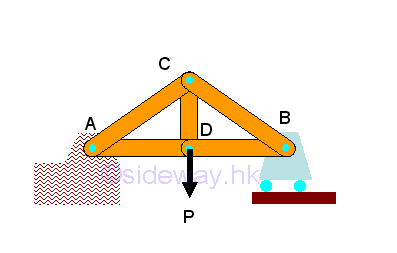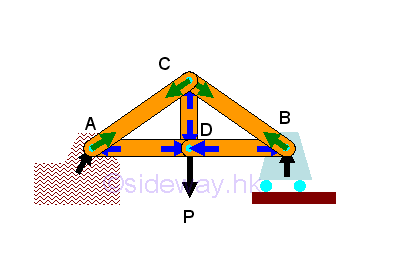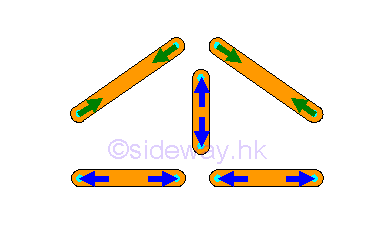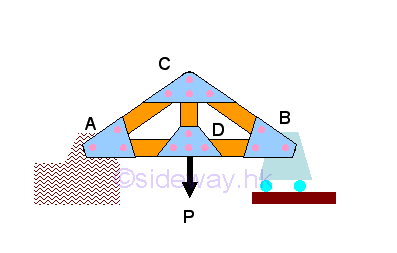 Sideway
BICK BLOG from Sideway
Sideway
BICK BLOG from Sideway
|
Link:http://output.to/sideway/default.asp?qno=120200069 Structure Truss Truss
Truss is one of the most common type of engineering structure, e.g. bridges and building. A truss is only constructed with straight members connected at connecting joints by hinge pins located at the two ends of each member. A frictionless pin at the joint implys no rotational motion is transmitted through the joint. No member in the truss is continuous through a joint. Therefore, member in the truss behaves like a short link and only tensile and compressive force can be transmitted between the end joints in static equilibrium. 
Since forces can only be applied at the joints of a member, a truss member is a two-force member. 
Usually, gusset plates are used for connecting the intersecting elements at the joint to eliminate the assembly sequence problem or may be in sometimes make the structure more stable. Although the original joint design of a truss is a fictionless hinge pin, truss member can also be rigidly connected because there is little impact of the force flow in a completely constrained and kinematically determinate structure. Since when designing a truss, the axial stiffness of the truss members is already sufficiently large enough to maintain the structure in the stable working condition and to ensure the bending restraint required at the connecting joint is negligible also. 
In truss structure design, the truss members are relatively slender for providing axial stiffness only. Since the truss members are not design for supporting lateral load, all loading can only be applied to the joint. Therefore, a system of stringers and cross beams are needed for any loading which cannot be applied onto the joints. For example, truss subject to a distributed load, or a concentrated load between two joints. In general, the weight of member is much smaller that the member axial force, the weight of member can often be neglected. However, when the member weight should be considered, the member weight can be assumed to be shared as loadings that being applied to the joints at two ends of the member. |
Sideway BICK Blog 24/02 |
||||||||||||||||||||||||||||||||||||||||||||||||||||||||||||||||||||||||||||||||||||||||||||||||||||||||||||||||||||||||||||||

